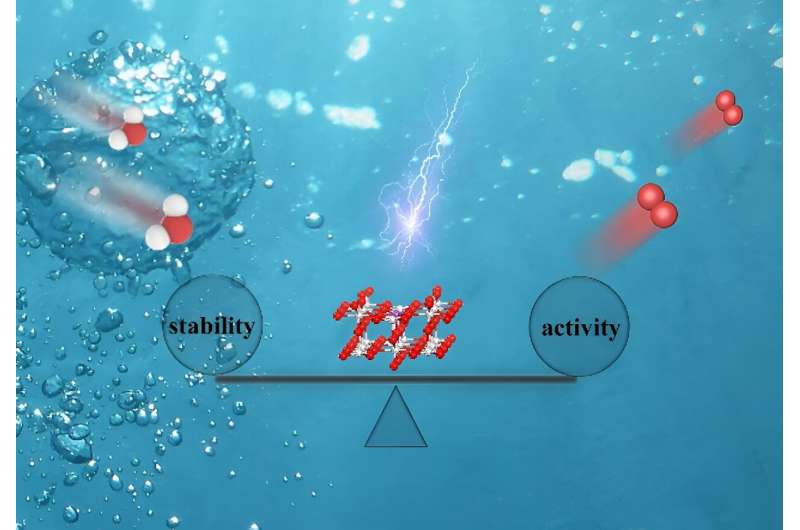This article has been reviewed according to Science X's editorial process and policies. Editors have highlighted the following attributes while ensuring the content's credibility:
fact-checked
trusted source
proofread
A Bi-doped RuO₂ catalyst for efficient and durable acidic water oxidation

Water electrolysis is a promising approach to generate hydrogen by the means of transforming electric energy powered by sustainable energy into chemical energy stored in hydrogen bonds.
Due to the lower operation temperature, higher voltage efficiency, higher current densities, and better compatibility over traditional alkaline electrolyzers, proton exchange membrane water electrolyzer (PEMWE) has emerged as a promising technology for green hydrogen generation.
However, the anode oxygen evolution reaction (OER) with sluggish reaction kinetics usually requires excessive energy consumption, which significantly limits the efficiency of PEMWE. Currently, iridium oxide (IrO2), which can suffer from highly oxidative and corrosive conditions, has been regarded as the state-of-the-art anode catalyst for PEMWE. However, the high cost associated with low mass activity strictly hinders the scale-up utilization.
Therefore, designing and exploring cost-effective catalysts with high electrocatalytic performance and stability toward acidic OER are of great urgency but still remain challenging.
Recently, ruthenium oxide (RuO2) is regarded as a promising alternative to IrO2 for acidic OER due to its high intrinsic activity and low price.
It is known that increasing the initial oxidation state of Ru in RuO2 to promote active Ru-centered oxidation is an effective strategy to enhance the electrocatalytic performance. To this end, great efforts have been devoted to doping foreign elements to adjust the valance state of Ru in RuO2-based catalysts, leading to much-enhanced activity.
However, the easy overoxidation of Ru sites to form soluble RuO42- species at high potential during the process of OER usually results in the collapse of crystal structure and dissolution of Ru species, which is the very reason for the unsatisfied long-term stability of RuO2 for acidic OER.
Thus, developing an efficient strategy to balance the seesaw relation between stability and activity of RuO2-based catalysts is essential for the practical application of PEMWE, yet challenging.
Recently, a research team led by Prof. Wei Luo from Wuhan University, China, developed a modified RuO2 catalyst with bismuth (Bi) doping (Bi0.15Ru0.85O2) to simultaneously boost the activity and stability toward acidic OER. X-ray photoelectron spectroscopy (XPS) and Ru L2,3-edges X-ray absorption near-edge structure (XANES) spectra demonstrate the increased initial oxidation state of Ru in Bi0.15Ru0.85O2 after Bi doping.
Electrochemical experiments, ultraviolet photoemission spectroscopy (UPS), and ultraviolet-visible spectroscopy (UV) spectra characterizations indicated reveal much faster electron transfer and better electroconductibility in Bi0.15Ru0.85O2.
Apparent activation energy tests and density functional theory (DFT) calculation results suggest the introduction of Bi can effectively reduce both the apparent activation energy and energy barrier of the rate-determining step from O* to OOH*, thereby leading to much-enhanced activity, with a low overpotential of 200.0 mV at 10 mA cm-2, as well as long-term stability over 100 hours.
The findings are published in the Chinese Journal of Catalysis.
More information: Liqing Wu et al, A Bi-doped RuO2 catalyst for efficient and durable acidic water oxidation, Chinese Journal of Catalysis (2023). DOI: 10.1016/S1872-2067(23)64554-1
Provided by Chinese Academy of Sciences





















